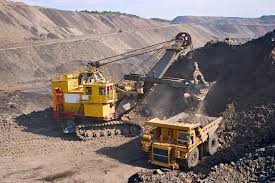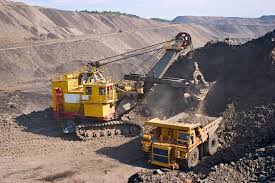
There are doubts within the global mining company - the Rio Tinto Group, about the delivery of the promises of returns that were once given by mining robots in the face of major rivals defer similar investments. The company has recently found out that creating the world’s largest moving robots to transport iron-ore across the vast Australian Outback is proving more complex and time-consuming than was expected by company.
A $518 million effort to deploy automated trains on its 1,700-kilometers (1,056 miles) of track that was undertaken by Rio, which gets more profit from iron-ore than anything else, is already two years behind schedule. According to Deutsche Bank AG, the delays mean the producer has cut output forecasts, and raised questions about whether the project is viable eve as the system was designed to save money by expanding capacity and reducing labor costs.
“There was an underestimation of the mechanical work we had to actually do versus the reality. The second issue is working our way through carefully implementing the various software upgrades as we go along,” Andrew Harding, the chief executive officer of Rio’s iron-ore unit, said in a June 3 interview in Perth. While claiming that there were no doubts about the completion of the project, the company executive however declined to specify when the program may be completed.
Australia, the world’s largest iron-ore exporter is no stranger to big mining companies like Rio adopting automation. Many of the companies use remotely operated equipment at export terminals and driverless systems for trucks and drills at mines. As the industry seeks methods to extend cost cuts as iron-ore prices have tumbled 74 percent from a record in 2011, winning savings on the trip between those two locations is proving more difficult.
BHP Billiton Ltd. said in an e-mailed statement that it’s focused on improvements to signaling and wireless communications and has “no immediate plans to adopt driverless trains” even though the company had announced in 2014 that it might start using automated trains. While Fortescue Metals Group Ltd., said that it has “no plans to introduce” the automated trains, Billionaire Gina Rinehart’s new $10 billion Roy Hill operation has yet to determine if returns on the technology are worth the investment risk.
Overseen by an operating center about a 90-minute flight away in Perth, the London-based Rio said in 2012 that its automated-train project would be finished by 2014. This would have ushered in 2.3-kilometer-long convoys that would essentially be the world’s largest moving robots.
The producer however said in September that it will give Rio a decade of competitive advantage over rivals who didn’t have the technology after the project gets completed in mid 2016.
“It’s been disappointing that it’s taken as long as it has. There is a risk, as has been seen, associated with going down this path,” said Andy Forster, a senior investment officer with Argo Investments Ltd., which manages about A$5 billion ($3.6 billion) in Australia and holds Rio and BHP shares.
According to Emilie Ditton, Sydney-based research director at IDC Energy Insights, the issues that have delayed the project are related to communication and connectivity with the locomotives and being able to control and respond to issues on the track. Rio is yet to specify the reason for the delays. She said that it’s much harder to retrofit existing railways compared to building infrastructure with capabilities for automation for new entrants such as Roy Hill.
(Source:www.bloomberg.com)
A $518 million effort to deploy automated trains on its 1,700-kilometers (1,056 miles) of track that was undertaken by Rio, which gets more profit from iron-ore than anything else, is already two years behind schedule. According to Deutsche Bank AG, the delays mean the producer has cut output forecasts, and raised questions about whether the project is viable eve as the system was designed to save money by expanding capacity and reducing labor costs.
“There was an underestimation of the mechanical work we had to actually do versus the reality. The second issue is working our way through carefully implementing the various software upgrades as we go along,” Andrew Harding, the chief executive officer of Rio’s iron-ore unit, said in a June 3 interview in Perth. While claiming that there were no doubts about the completion of the project, the company executive however declined to specify when the program may be completed.
Australia, the world’s largest iron-ore exporter is no stranger to big mining companies like Rio adopting automation. Many of the companies use remotely operated equipment at export terminals and driverless systems for trucks and drills at mines. As the industry seeks methods to extend cost cuts as iron-ore prices have tumbled 74 percent from a record in 2011, winning savings on the trip between those two locations is proving more difficult.
BHP Billiton Ltd. said in an e-mailed statement that it’s focused on improvements to signaling and wireless communications and has “no immediate plans to adopt driverless trains” even though the company had announced in 2014 that it might start using automated trains. While Fortescue Metals Group Ltd., said that it has “no plans to introduce” the automated trains, Billionaire Gina Rinehart’s new $10 billion Roy Hill operation has yet to determine if returns on the technology are worth the investment risk.
Overseen by an operating center about a 90-minute flight away in Perth, the London-based Rio said in 2012 that its automated-train project would be finished by 2014. This would have ushered in 2.3-kilometer-long convoys that would essentially be the world’s largest moving robots.
The producer however said in September that it will give Rio a decade of competitive advantage over rivals who didn’t have the technology after the project gets completed in mid 2016.
“It’s been disappointing that it’s taken as long as it has. There is a risk, as has been seen, associated with going down this path,” said Andy Forster, a senior investment officer with Argo Investments Ltd., which manages about A$5 billion ($3.6 billion) in Australia and holds Rio and BHP shares.
According to Emilie Ditton, Sydney-based research director at IDC Energy Insights, the issues that have delayed the project are related to communication and connectivity with the locomotives and being able to control and respond to issues on the track. Rio is yet to specify the reason for the delays. She said that it’s much harder to retrofit existing railways compared to building infrastructure with capabilities for automation for new entrants such as Roy Hill.
(Source:www.bloomberg.com)





